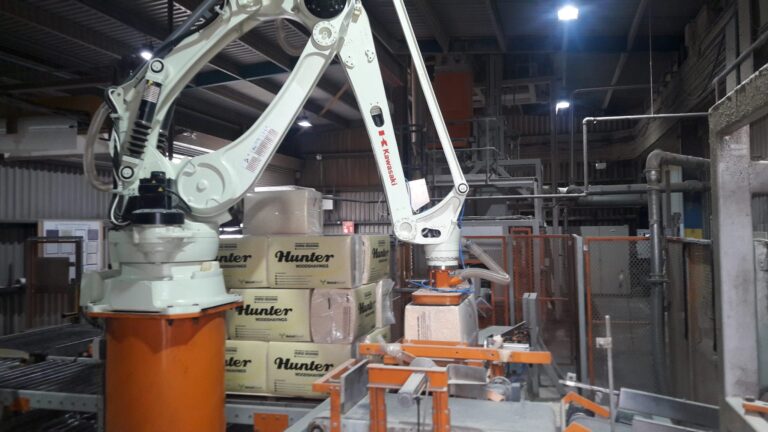How a high-speed palletising robot is helping one of the UK’s leading wood product manufacturers get its shavings off the production line and into stables across the country.
Metsä Wood UK’s head office in Boston, Lincolnshire is just one of many sites across the world that specialise in providing sustainable, premium-quality wood products for many industries including the construction and industrial sectors.
Metsä Wood employs around 1,500 people and 2019 sales reached €400m (£344m): its primary products are Kerto LVL (laminated veneer lumber) together with birch and spruce plywood.
Its four UK sites at Boston, Kings Lynn, Widnes and Grangemouth also supply machined softwood and panel material to the merchant and DIY markets.
Another key strength of the business is an associated revenue stream that makes good use of the wood shavings generated during the various manufacturing processes at the Boston site.
The shavings produced go into a sector that has proven both buoyant and resilient over the years: the equestrian market. Every year, thousands of tonnes of Metsä Wood Hunter woodshavings are used for bedding in stables across the country.

Once the loose shavings have been collated into bales using bespoke machinery at the Boston plant, the bales are removed from the line by a recently installed Kawasaki robot and placed directly onto a 1,200 x 1,200mm pallet ready for dispatch.
To ensure that the load is stable, the robot must also rotate the bales through 90° as it stacks, a task performed whilst transiting from pick-up to deposit.
The new robot, which was installed in August 2019, is a Kawasaki CP180L with associated HMI, which replaced an older robot, also a Kawasaki unit (a ZD130) that was originally installed at the plant in 2002.
“Our records revealed that the Kawasaki robot installed in 2002 had completed 10,794,000 cycles, and it had performed superbly,” says Metsä Wood project manager Andrew Burns.
In a typical working day, around 1,000 25kg bales are picked off the line and stacked using the necessary orientation changes programmed into the new Kawasaki CP180L robot.

Removing the old robot and placing the new one onto its plinth was straightforward according to Mick Middleditch of RJC Projects, which was tasked with accessing the cell and swapping them over.
“It was a trouble-free, like-for-like exchange that presented us with no problems or challenges,” says Middleditch.
The installation, integration and programming of the newly installed CP180L was undertaken by KTM Systems.
KTM director Peter Mason says: “This job was identified as a critical one from the start.
“It was made clear that if this part of the manufacturing process was closed down for more than a few hours, production at the entire factory would come to a standstill.
“Our team set to work the moment RJC had placed the new machine in position and we had the new robot installed, programmed and commissioned well inside the stipulated window.”
According to Kawasaki, unlike the ZD130 robot installed at the Boston Metsä Wood plant almost 20 years ago, the CP180L that has replaced it is faster and more accurate, but uses less energy than its predecessor.
“The reach is longer, at 3.255m, offering greater flexibility for users, and it is easier to programme. Further, this latest model also requires less maintenance too,” says Ian Hensman, sales manager, Kawasaki Robotics.
Want to read more articles like this?
Akasol places equipment order for new fully automated production lines
Kuka wins huge robot order from BMW
Salmon factory set for fully automated palletising solution









